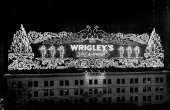From Chaos to Order: A Brief Cultural History of the Parking Lot
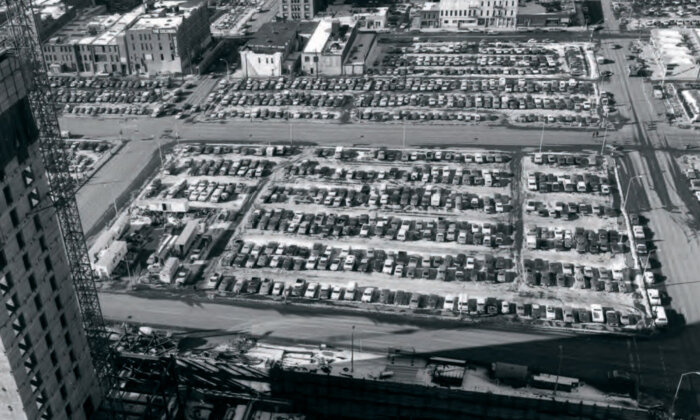
Developed in Europe in the latter part of the 19th century, and introduced to the America soon after, the motor vehicle was still a rare sight on the streets of American cities in the early 1900s. At that time only 8,000 privately owned motor vehicles had been registered in the entire country, many of them propelled by steam. The period from 1900 to 1929 saw the introduction of nearly 1,200 new automobile designs with various means of self-propulsion.
This creative wave reached its peak in the year 1907, when 92 new entrants appeared on the landscape. In 1910, American factories made 181,000 passenger cars and 6,000 trucks and buses. In 1914, the production of motor vehicles exceeded the output of horsedrawn wagons. By 1939, 23 million vehicles were registered across the United States. By the mid-20th century, the motor vehicle was in full control of the transportation scene, and has remained unchallenged since.
Rules of the Road
Up until 1900, traffic regulations were almost nonexistent in United States cities. The federal government had not initiated any regulations, and such traffic rules as existed were almost entirely the result of special legislation by municipalities.
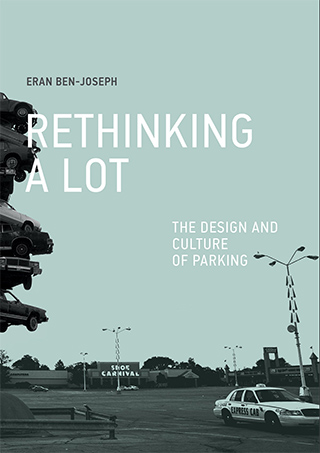
Historians attribute the earliest recorded American law regulating speed on the roads to the Rhode Island Colonial Assembly, which in 1678 prohibited the riding of horses “at gallop or run speed” on the streets of Newport. Connecticut enacted the first automobile speed statute in 1901, and in 1907 the village of Glencoe, Illinois installed the first known speed bumps on its streets to discourage excessive speeding. In New York City an assortment of ordinances scattered through its Penal Codes, Sanitary Codes, and City Charter attempted to regulate various driving behaviors.
An 1885 city ordinance set a maximum speed for major streets, and other ordinances passed at intervals through 1903 regulated matters such as on which side vehicles should pass (on the left side) and on which side of the highway vehicles have the right of way (north- or southbound).
The Father of Parking Rules
Although he never learned to drive a car, William Phelps Eno (1858–1945) was a pioneer in traffic control and regulation. Eno is known for developing the original traffic plans for major cities including New York, London, and Paris, and is credited with helping to invent and popularize stop signs, taxi stands, pedestrian safety islands, and other traffic features commonly used throughout the world.
It wasn’t until 1903 that any serious attempt was made to apply compulsory rules to control street traffic in cities across the United States, with New York taking a leading role.
His “Rules of the Road,” adopted by New York City in 1909, became the world’s first city traffic plan. He also wrote the first-ever manual of police traffic regulations. In 1921, Eno established the Eno Foundation for Highway Traffic Regulations, known today as the Eno Transportation Foundation, a nonprofit organization dedicated to studying and promoting transportation safety.
New York, New York
It was not until 1903 that any serious attempt was made to apply compulsory rules to control street traffic in cities across the United States, with New York taking a leading role. The regulations were printed in small four-page folders for general distribution, and displayed on placards in public stables and along street fronts.
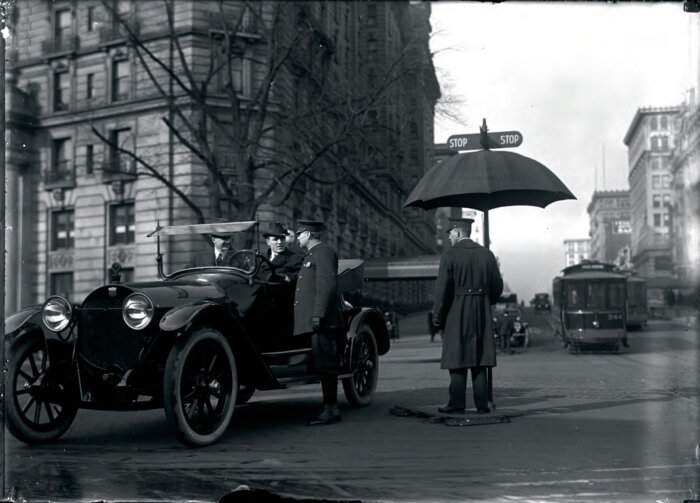
During the First World War it became apparent that standard traffic and vehicle regulations needed to be implemented across the nation. As the war ended, the Highways Transport Committee of the Council of National Defense proceeded to test and revise the New York City regulations, with the objective of applying them throughout the United States. On May 8, 1919, the Council sought to promote a national standard by publishing as a Police Code the General Highway Traffic Regulations with Safety Directions for Pedestrians. By 1922, the Council of National Defense ceased to exist, and the legislation was transferred to the Bureau of Public Roads of the United States Department of Agriculture. With the help of the Eno Foundation, the Code was further amended, and received final approval and wide distribution in 1924.
Some of the notable articles of the Code included:
- Passing, Turning and Keeping Near Curb
- Right of Way Rules and Signals
- Ranking, Parking, Stopping, Following, Backing
- Overtaking Street Cars
- The Control, Treatment and Condition of Horses
Rank and Park
In the early 1900s two words defined what is currently known as “parking” in the United States: “to rank” (ranking) and “to park” (parking). To rank was to stand vehicles (one behind the other) parallel to the curb (usually with little space in between). To park was to stand vehicles (parallel to one another) at an angle to the curb. “To rank” was derived from the term “cab rank,” which was used in London, where cabs were positioned in taxi stands one behind the other in single file. The term “to park” originated from the practice of placing cannon carriages parallel to one another; in such a position these are said to be parked.
Dead or Alive
Cars left unattended on streets or in public areas were a major problem for cities at the turn of the 20th century. As traffic regulations evolved, codifying the use and control of parked cars was addressed by a clear designation of occupancy while the cars were “parking” or “ranking.” Early codes suggest two definitions of automobile parking: “live” and “dead.” A live vehicle is one whose driver is present and prepared to move the vehicle; a “dead” vehicle is one whose driver is absent or unable to move the vehicle. The issue of dead vehicles was seen as especially problematic at a time of no clearly designated parking and few ranked vehicles. During this time, chauffeured private cars were more prevalent than single-driver cars; this led to the theory that ranking could operate successfully only with live cars.
Cars left unattended on streets or in public areas were a major problem for cities at the turn of the 20th century.
In “The Storage of Dead Vehicles on Roadways,” Eno writes: “When vehicles are ranked, no one of them can move out of the line independently of the others, unless considerable waste space is allowed for between them, whereas when they are parked, being parallel to one another, any one of them can get away without causing any other one to move.”
Parking Class
The inefficiency associated with parallel curb parking prompted two suggestions by traffic legislators: to restrict curb parking to live vehicles, and to allocate off-street spaces for dead vehicles. Eno remarks on the two options:
The greatest opposition which we shall have to my recommendations (of limiting ranking) will be from owners of cars who have no chauffeurs, who will claim that class legislation is being proposed, whereas it is they who desire class legislation because what they want to do is to leave their cars where they will be a nuisance and a menace.
And he predicts the use and creation of parking lots:
Vacant lots will be leased to store waiting vehicles and it will become profitable to construct public garages where cars can be left during the day when people are attending to their business and during the evening when they are at the theater. Some of these storage places will undoubtedly be in the congested parts of cities and others a little way out where people will leave their vehicles and proceed to their destination by street car, bus or taxi. This latter will be the case, I believe, in some of our congested cities such as New York where it does not really pay to go downtown in private cars.
How Long Can I Park Here?
Legal determination of what parking means came about with courts’ definition of “parked” versus “moving” cars. One of the earliest known rulings was the 1812 case of Rex vs. Cross, in England, in which the defendant was indicted for allowing his wagons to remain for too long on a public street. The court indicated that “Every unauthorized obstruction of a highway to the annoyance of the King’s subject is a nuisance. The King’s Highway is not to be used as a stable yard.”
Curb Blowouts
A 1938 report by the Fisk Tire Company blamed 70 percent of tire failures on “one of the American driver’s worst habits — jamming the tire against the curbstone through careless parking.” The danger, this tire company declared, “lies in subsequent blowouts of damaged tires, which may wreck a car and result in personal injuries and death. Such careless parking may also knock front wheels out of alignment.”
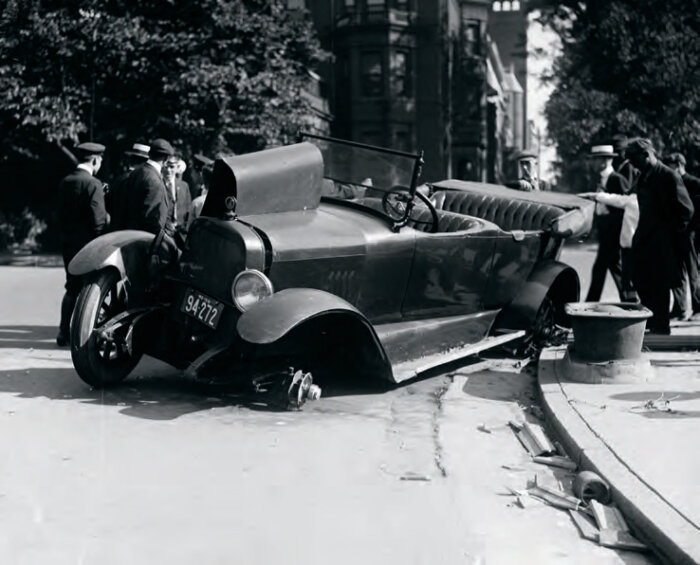
The Dawn and Demise of Angled Parking
By the first decade of the 20th century, angled parking was advocated as the best solution for parking and storing cars. This evolved naturally from the widespread tradition of curbing horses and wagons perpendicular to the curb; cars followed suit. With the growth of car ownership and the lack of ample space on main streets, angled parking was haphazardly introduced on narrow city streets to increase capacity. The result was often greater congestion, narrowing of driving lanes, and lack of passing space. Cars backing out of the angled parking also increased the hazards for passing cars.
With the growth of car ownership and the lack of ample space on main streets, angled parking was haphazardly introduced on narrow city streets to increase capacity.
By the 1920s, a few cities had established specific dimensional standards. These included minimum street widths, travel lanes and stall (parking space) dimensions. In New York City, for example, measurements for angled parking stipulated that spaces should be at 90, 45, 37½, or 30 degrees to the curb, with an ideal width of not less than 7½ feet or more than 8½ feet wide and a length of 12 to 14 feet (3.6 to 4.3 meters) depending on the angle used.
By the mid-1950s the striving for efficiency of traffic movement and the push for reducing points of conflict all but rendered angled parking a dangerous nuisance. Of particular concern were cars that parked front first toward the curb, and upon leaving backed out into oncoming traffic. Cities across the country outlawed its use and, with the surplus space, either added or widened existing travel lanes. Curb parking (ranked) replaced angled as the preferred solution of traffic engineers.
Off-Street Lots
In the 1920s, cities across America started to allocate space for parking lots that were either owned and managed privately by commercial and retail associations, or owned by public entities and maintained by private operators. Some of these lots were within downtown areas, others were located at city perimeters. One of the earliest municipal lots was constructed in Los Angeles in 1922, followed by Flint, Michigan in1924, and Chicago and Boston in 1930. In Pittsburgh in 1927, periphery lots that could handle 900 cars, sited near the Allegheny River’s edge, charged ten cents per car for those visiting or working downtown.
In 1923 the National Conference of City Planning encouraged municipalities to take planned and rational action in allocating sites for off-street parking facilities. One of the first comprehensive citywide parking plans was completed in Garden City, Long Island, in 1936. The first private facility organized, constructed, and managed by the local commerce association within a city center was in all likelihood built in Oakland, California, in 1929.
Parking Spaces, Women’s Places
Women’s mobility at the beginning of the 20th century was highly restricted, and their presence behind the wheel was considered “a step out of place.” Yet, as women began to take an active role in shopping for their families, they entered the public realm en masse. This shift, writes historian Virginia Scharff, raised questions about “the value of women’s time, the gendered dynamics of suburbanization, the right of women to enter public life, and the emergence of ’twenties consumerism out of an era of social reform.”
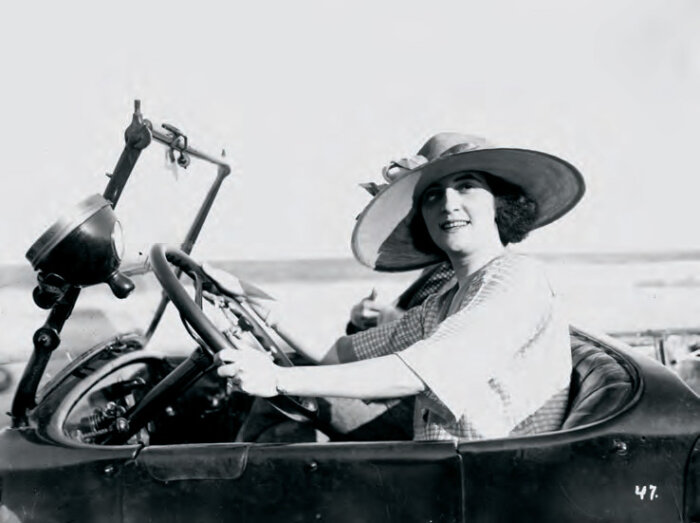
According to some surveys of that time, California had taken the lead over all other states in the number of women drivers. In Los Angeles, San Francisco, and Oakland, 20 percent of all motorists were women. Women preferred personal automobiles because they offered greater flexibility, more comfortable conditions, and better opportunities for socializing with friends, and access for those who lived beyond the streetcar’s reach.
The rising conflict between women drivers, shopping, and parking can be illustrated by the parking ban attempt in Los Angeles, as Scharff examines in her article “Of Parking Spaces and Women’s Places: The Los Angeles Parking Ban of 1920.” On April 10, 1920, the Los Angeles City Council decided that “since ninety percent of those who entered the downtown area did so by streetcar, the best solution to overcrowding on the streets was to ban private automobile parking downtown.” Almost immediately, downtown merchants were negatively affected by the ban. By the third day, “an advertising manager for Jacoby Brothers, a [major department] store in the area covered by the ban, reported that business was down 15 percent,” reasoning that “there are many more women who use automobiles for shopping in Los Angeles than any other place in the country.” And by the ninth day, “another merchant claimed downtown business was down 40 percent.”
The ban did not stop women drivers from getting their shopping done; they simply took their business elsewhere. A rumor in a Los Angeles Record article on April 20 reported that a woman drove with her car to Pasadena and bought $23,000 worth of furniture “because the police made her remove her car from the vicinity of Barker Bros. store a few days ago when she was inspecting goods there.” The result — the parking ban was overturned just 17 days after the regulation went into effect.
Park with Us — Ride with Us
Attempting to attract potential customers, some of the first private parking lots were constructed by street railway companies in the 1920s with the aim of providing ample parking space at their suburban terminals, making it an easy transfer from car to rail. “Park with Us and Ride with Us” was the slogan of the Philadelphia Rapid Transit Company, which established three large parking areas accommodating a total of 870 cars in different locales in the city. In 1927 they charged 25 cents per car, which included two round-trip rail tokens worth fifteen cents. No time limits were set, but an additional fee was charged if the car was left parked for more than twenty-four hours. Attendants were on duty day and night, and at two parking lots service facilities providing gas and oil were available.
Attending or Self-Serve
Most parking lots in the 1920s were guarded and supervised. Actual parking was handled by attendants. They often required a large staging area near the entrance where customers left their cars. With mass popularization of the automobile, and the growing economic power of the middle class after the Second World War, customer self-parking became popular and eventually replaced the attended parking.
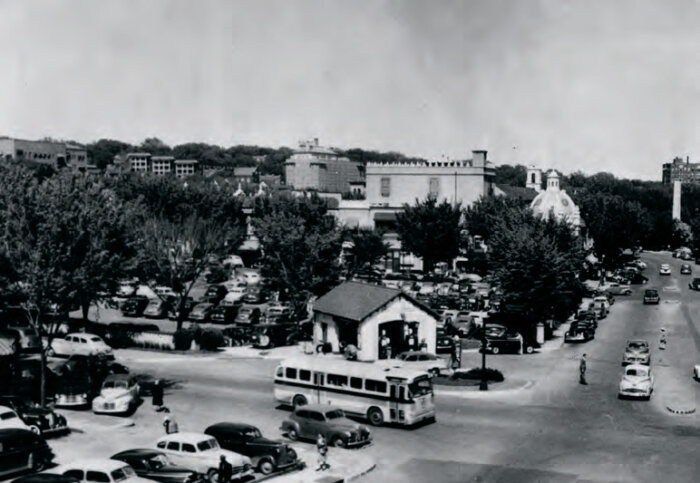
Parking at the Mall
It is no surprise that some of the earliest surface parking lots in the United States were designed and built next to shopping centers. In 1923, the J. C. Nichols Company constructed two lots of 150-car capacity next to the new Country Club Plaza Shopping Center in Kansas City, Missouri. According to Davis K. Jackson, the engineer who worked on its creation, “This was a radical departure from the normal practice at that time, but it has since become widely accepted, and large free parking areas are generally considered essential for any suburban development.” Although Jackson advocated ample free parking, his actual design was sensitive to the overall site conditions. He believed in smaller, “well-located” lots, and emphasized that “it is important that parking lots not be too large.” “Otherwise,” he said, “there is a risk of serious interruption to the retail continuity of the shops.” He describes the lot designs as “beautified . . . with masonry walls, vines, flowers, trees, shrubs, and objects of art.” He endorsed the belief that such expense is justified as part of creating an attractive shopping experience.
Eran Ben-Joseph is a former city planner and urban designer. He is professor of landscape architecture and planning at MIT and the author of, among other books, “The Code of the City” and “ReThinking a Lot,” from which this article is excerpted.

